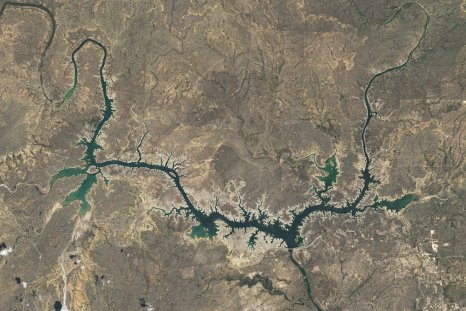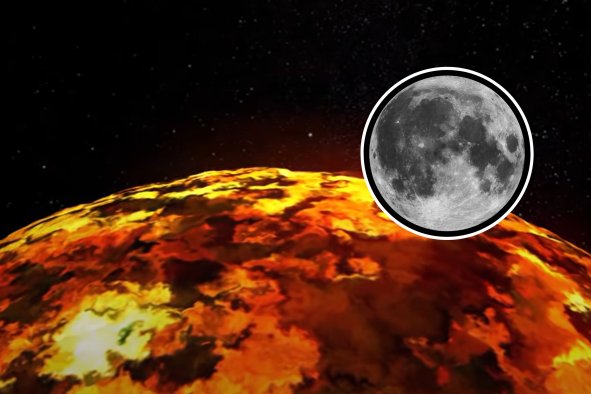Scientists have identified a previously unknown microscopic organism in Eastern Sierra Nevada's Mono Lake that could provide insights into the origins of complex animal life on Earth.
The newfound organism is a type of choanoflagellate, a single-celled microorganism closely related to animals. These tiny creatures share a common ancestor with all animals, making them crucial for understanding the transition from single-celled to multicellular life.
"I'm fascinated by the origin of animals, but it turns out that you can't really study it from the fossil record because the first animals were small and squishy," Nicole King, a UC Berkeley professor of molecular and cell biology and co-author of the study, told Newsweek.
"Then I learned about these fascinating organisms called choanoflagellates, and though it was generally accepted that they were the closest living relatives of animals, no one was studying them."
The findings were published online in the journal mBio.
The "choanos", as King likes to call them, have the ability to form multicellular colonies, which mirror the early stages of animal embryonic development, offering a glimpse into ancient evolutionary processes.
"Mono lake is hypersaline; I think it has three times the salinity of the ocean and is hyperalkaline," King said. "It also contains high levels of toxins, including cyanide."
All of this makes the lake an inhospitable environment, with only the hardiest of extremophiles capable of calling it home. "The biodiversity there is quite low," King said.
But the discovery of this particular choanoflagellate, named Barroeca monosierra after the lake, adds a new dimension to the lake's biological significance.
What sets this species apart is its ability to maintain a stable relationship with bacteria, forming one of the simplest known microbiomes.
"Choanos have really interesting interactions with bacteria. For example, we've discovered that certain bacteria can cause them to switch from being single-celled to multicellular," King said.
"Just imagine that you're a single-celled organism swimming around and you encounter this molecule and suddenly you're like, 'OK, now I'm going to be multicellular.'"
King explained that bacteria can also cause choanos to start mating, adding, "we call that kind of an aphrodisiac because they're normally living these solitary asexual lives. And again, they encounter these molecules in nature some way and they're like, 'OK, it's time to party.'"
This discovery in Mono Lake marks the first time a choanoflagellate has been observed harboring a microbiome, a discovery that could have implications for understanding early life forms and the evolution of complex life.
The research traces back nearly a decade to when then-graduate student Daniel Richter collected a sample of Mono Lake water during a climbing trip.
"While I was in graduate school in Berkeley in Nicole's lab, I liked to escape for long weekends to the high desert of the Eastern Sierra Mountains together with friends," Richter told Newsweek.
"To my surprise, almost every flask contained a high proportion of choanoflagellates, higher than in any other environment I had ever sampled."
Under a microscope, the water was teeming with large, spherical colonies of choanos. The colonies, composed of nearly 100 identical cells, rotate and move as individual cells beat their hairlike flagella.
Initial observations by graduate student Kayley Hake revealed bacterial DNA within the hollow spheres of choanos, suggesting a stable relationship rather than a typical predator-prey dynamic.
"The bacteria were a huge surprise. That just was fascinating," King said in a statement.
"In our prior studies, we found that choanos responded to small bacterial molecules that were floating through the water, or [that] the choanos were eating the bacteria, but there was no case where they were doing anything that could potentially be a symbiosis. Or, in this case, a microbiome."
To further investigate the nature of this relationship, King collaborated with Jill Banfield, a UC Berkeley professor and expert in metagenomics.
Banfield's team identified various bacterial species in Mono Lake and within the choanoflagellate colonies, confirming that some bacteria thrive better inside the choanoflagellate than others.
Explaining the significance of this, King added, "It could be that the choanoflagellates are taking advantage of something that the bacteria do.
"Bacteria are often very good at detoxifying the environment in which they're found. Or it could be that the choanos are farming the bacteria because they want to eat them later.
"I don't really know which of these are true; it could be that all of them are true."
While much remains speculative, this discovery paves the way for future research on the interactions between simple organisms and bacteria, potentially shedding light on the origins of symbiosis and microbiomes in early life forms.
"I think the exciting thing is that we have a close relative of animals that might tell us about how animal interactions with bacteria first evolved," King said.
"I hope it tells us something about evolution. But even if it doesn't, I think it's a fascinating phenomenon."
Do you have a tip on a science story that Newsweek should be covering? Do you have a question about wildlife? Let us know via science@newsweek.com.
References
Hake, K. H., West, P. T., McDonald, K., Laundon, D., Reyes-Rivera, J., Bayonas, A. G. D. L., Feng, C., Burkhardt, P., Richter, D. J., Banfield, J. F., & King, N. (2024). A large colonial choanoflagellate from Mono Lake harbors live bacteria. mBio. https://journals.asm.org/doi/10.1128/mbio.01623-24
Disclaimer: The copyright of this article belongs to the original author. Reposting this article is solely for the purpose of information dissemination and does not constitute any investment advice. If there is any infringement, please contact us immediately. We will make corrections or deletions as necessary. Thank you.



